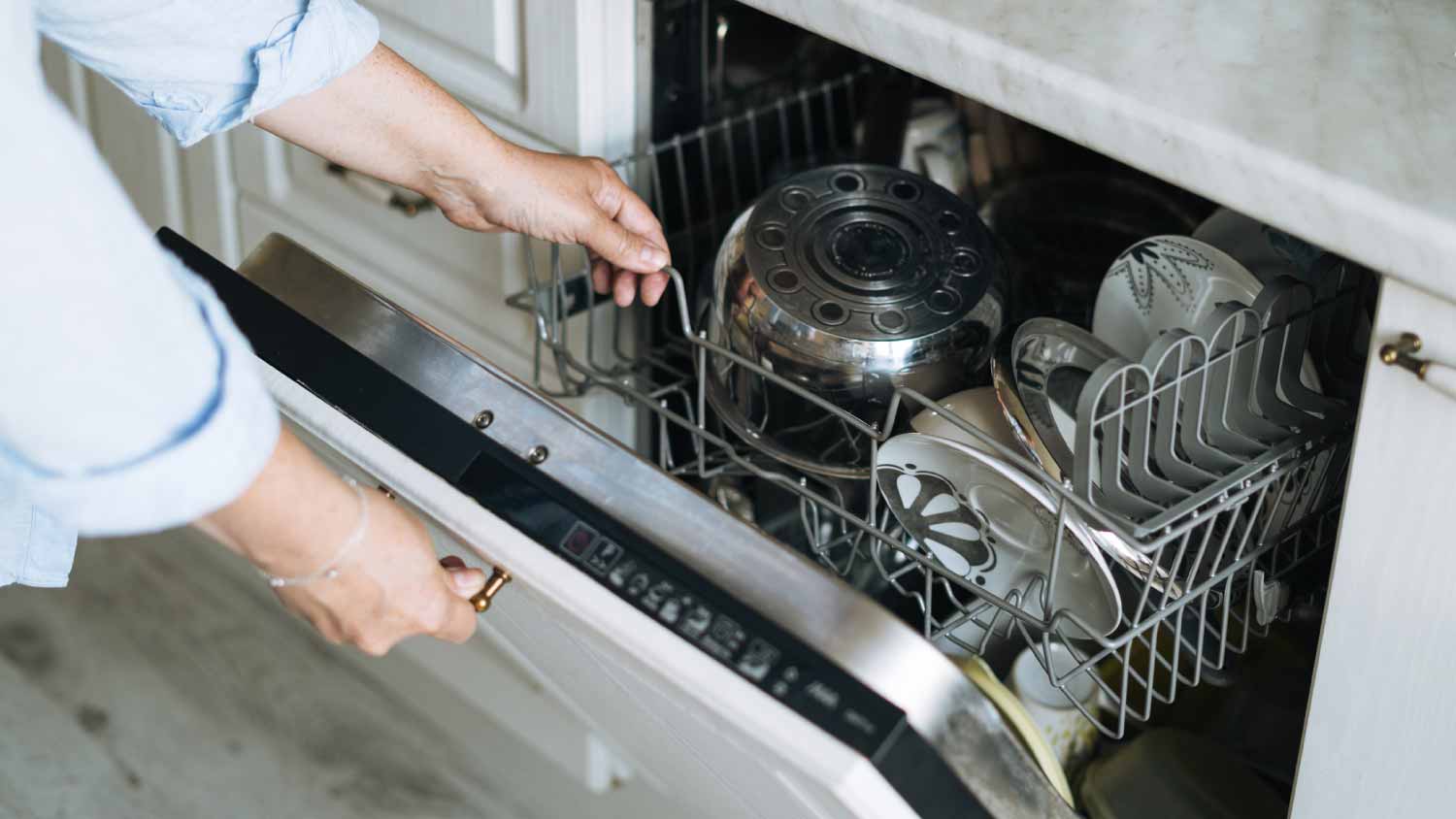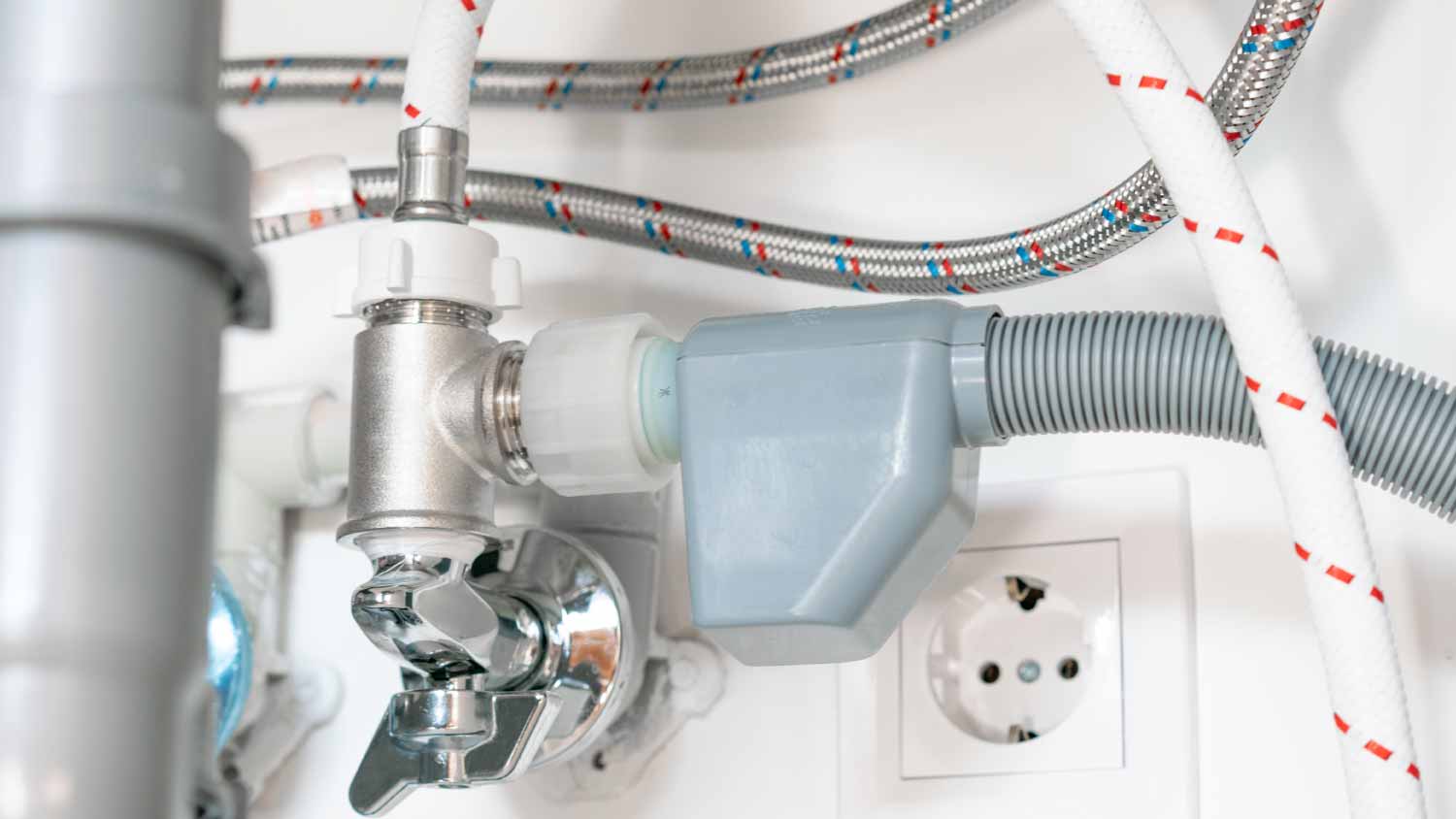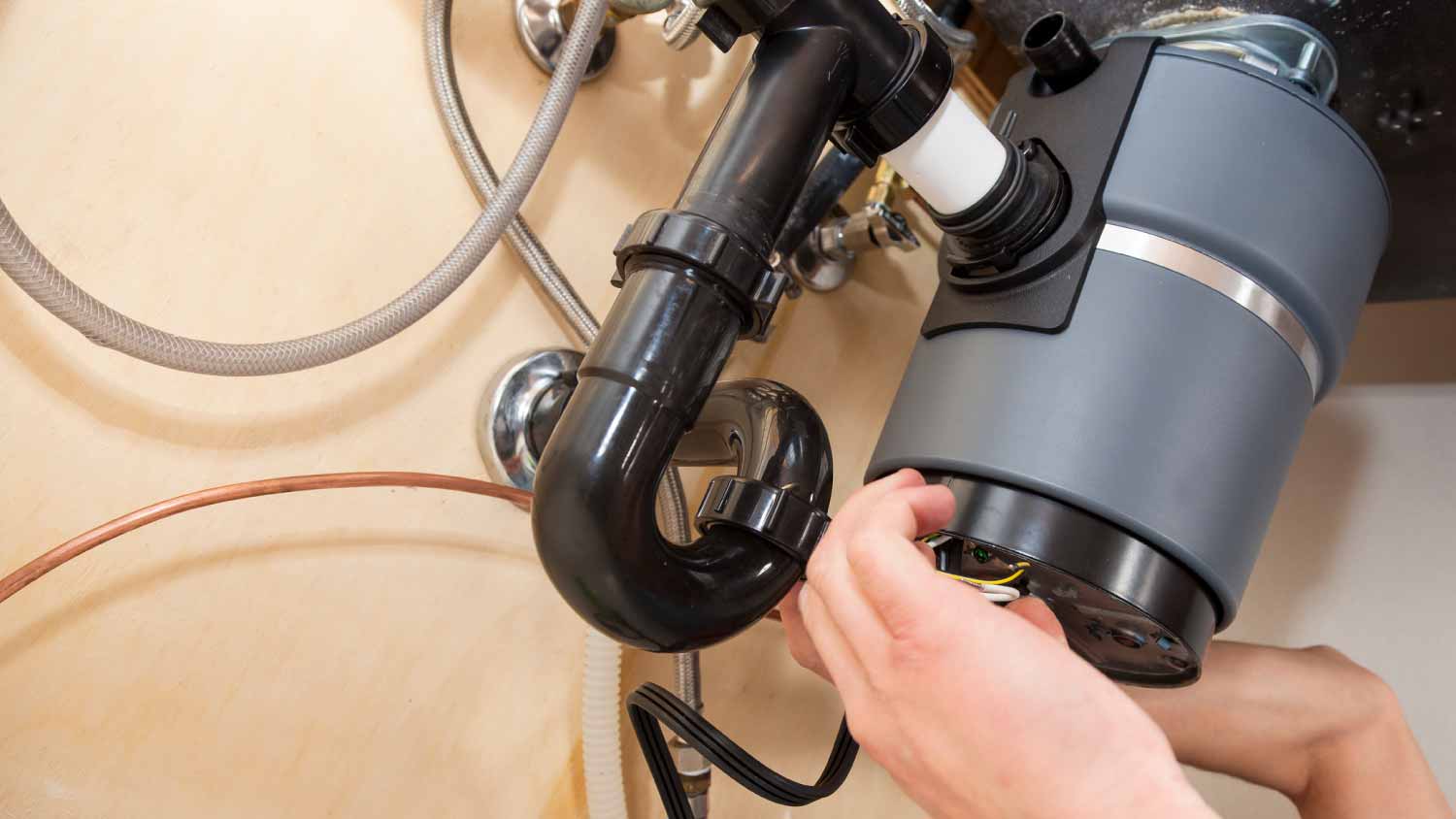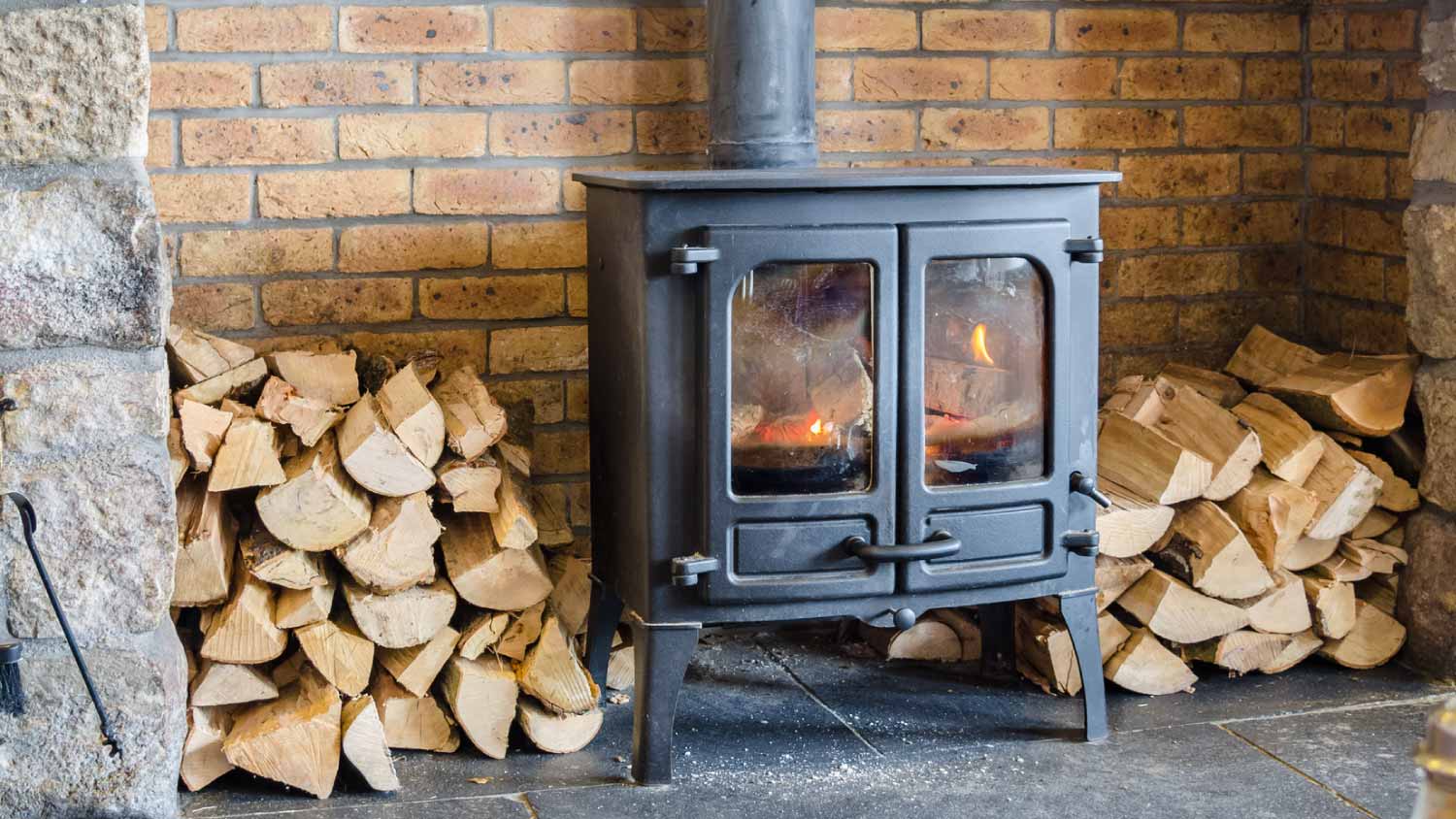Why Is My Dishwasher Draining Into My Sink? 5 Common Problems
When dishes are clean, your sink should be too


A plugged dishwasher drain, sink drain, garbage disposal, or air gap can cause drainage issues.
A loose or misaligned drain hose loop can cause backflow into the sink.
Some solutions, like clearing clogs, are easy DIY projects.
Disassembling parts of your sink, dishwasher, disposal, or drainage system is best left to the pros.
The only thing worse than a toilet that fills up after flushing is a sink that fills up when you run the dishwasher. Thankfully, you can stop the backflow of dirty water for good with a little know-how. We’ve rounded up five common reasons why your dishwasher is draining into your sink and what you can do about it.
1. Loose Drain Hose Loop

The drain hose runs from your dishwasher up to the kitchen sink drain, which then connects to the drain or garbage disposal. If the loop becomes loose, clogged, or damaged—or if it’s improperly installed without enough height to prevent backflow—you could experience water draining into your sink.
How to Fix It
First, check to ensure it’s fastened and in good condition. If you suspect the hose is incorrectly placed, hire a pro to install the drain hose loop correctly.
2. Faulty Air Gap
If your dishwasher uses an air gap to prevent gray water from back-flowing, this air gap can get damaged over time or clogged. The gap is a fitting designed to prevent backflow.
How to Fix It
Inspect the air gap for signs of damage or clogs, and repair it or clear the clog to fix the problem.
3. Clogged Kitchen Sink
It’s easy for food and gunk to collect in kitchen sinks. If you don’t have a garbage disposal, you may have a clog in the kitchen sink drain. The pressure from water filling up in the plugged pipes will cause the water to rise back up to the sink or dishwasher. A telltale sign of a clogged kitchen sink is the smell of expired food.
How to Fix It
Clear it out using vinegar and baking soda, a drain cleaner, or a drain snake. If none of these work, you may need to disconnect the plumbing parts of your sink to clear out drains that are deep within the P-trap. Consider working with a pro to take apart your sink and clean it.
4. Plugged Garbage Disposal

If there’s a plug in your garbage disposal, this could block water from exiting through the drain, causing the dishwasher to drain incorrectly and overfill in the sink or the bottom of the dishwasher.
How to Fix It
Clean your garbage disposal by pouring baking soda and vinegar down the drain or using a drain cleaner.
5. Blocked Dishwasher Drain Line
A plugged garbage disposal could also indicate that there’s a blockage in the drain line that connects the dishwasher to the garbage disposal instead of a clog in the disposal.
How to Fix It
In this case, clean out the strainer in your dishwasher and flush out the drain line.
When to Call a Pro
If you’re unable to clear out your garbage disposal yourself and you suspect a clog, it’s best to hire a dishwasher repair pro to take apart the disposal and clear the clog or replace the garbage disposal. The units are sharp and require electricity to operate, so it’s better to be on the safe side and avoid any risk of injury by hiring a pro who knows what they’re doing to handle the job.
The same goes for any complex alterations or disassembling of your kitchen plumbing. When in doubt, call a professional.
How to Prevent Your Dishwasher from Draining into Your Sink
You can take several steps to help prevent your dishwashing from draining into your sink, including:
Cleaning your dishwasher regularly: Don't allow limescale and food particles to collect in your drains. Routinely deep clean your dishwasher every 3 to 6 months, and deep clean your sink once a week.
Removing large food particles before placing dishes in the dishwasher: Scraping large pieces of food into the trash or compost can help prevent your sink or dishwasher from getting clogged.
Properly removing grease from dishes: You should never pour grease down your disposal drain. Dispose of grease by pouring it into a separate container rather than letting it clog your dishwasher or sink drain.
Using the right amount of detergent: Too much dishwasher detergent can cause build-up that can plug up a drain.
Frequently Asked Questions
A dishwasher repair costs around $200 on average, but prices range from $160 to $300 depending on the type of repair. Replacing a filter or gasket costs significantly less than replacing a dishwasher motor or pump. If your dishwasher is 10 years or older, consider upgrading to a newer model to avoid frequent repair costs.
If your dishwasher keeps filling with water at the bottom but doesn’t fill into the sink, the issue is likely due to a blockage within the dishwasher or drain. Regularly clean your dishwasher filter basket to ensure it’s not clogged with food, and run a vinegar rinse periodically if you have hard water to remove limescale buildup.



.jpg?impolicy=leadImage)

- Appliance Repair Companies
- Washing Machine Repair
- Dryer Repair
- Refrigerator Repair
- Dishwasher Repair
- Oven Repair
- Wood & Pellet Stove Repair
- Freezer Repair Services
- Wood Stove Services
- Gas Stove Repair
- Emergency Appliance Repair Companies
- Ice Maker Repair
- Gas Appliance Repair
- GE Appliance Repair
- GE Refrigerator Repair
- GE Dryer Repair
- GE Dishwasher Repair
- GE Washing Machine Repair
- Samsung Appliance Repair
- Samsung Refrigerator Repair
- Samsung Dryer Repair
- Samsung Washer Repair
- Samsung Dishwasher Repair
- Samsung Oven Repair
- Whirlpool Repair
- Whirlpool Refrigerator Repair
- Whirlpool Washer Repair
- Whirlpool Dryer Repair
- Whirlpool Oven Repair
- Maytag Appliance Repair
- Maytag Refrigerator Repair
- Maytag Washer Repair
- Maytag Dryer Repair
- Maytag Dishwasher Repair
- Kitchenaid Appliance Repair
- Kitchenaid Oven Repair
- Kitchenaid Refrigerator Repair
- Kenmore Appliance Repair
- Kenmore Dishwasher Repair
- Kenmore Washer Repair
- Kenmore Dryer Repair
- LG Refrigerator Repair
- Bosch Appliance Repair
- Kenmore Refrigerator Repair
- LG Appliance Repair Services
- GE Microwave Repair
- Electrolux Appliance Repair
- Electrolux Washer Repair
- Kitchenaid Dishwasher Repair Services
- Wood Stove Inspection
- Dishwasher Installation
- Trash Compactor Repair










